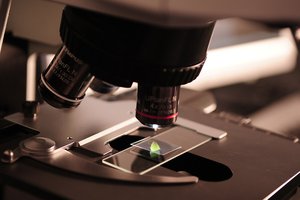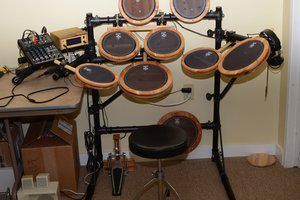Further work:
The "Delta Flyer", the prototype was built with solder-assisted wire wrap and required a keyset from a "donor" keyboard to work. It's repeatable but it more or less exchanges a working, well-designed (if kinda lame) instrument for an experimental music device.
The next version is going to have an opto-isolated (that's what the reference design calls for) MIDI interface. It's also going to be called something different (current idea retro-enmodulator) so it can be sold, even if not by me. Construction will be on actual PCB (very very sparse with the pots dominating the surface area) still mostly through hole and leveraging the Nucleo through the connectors. I'm also planning to make use of so-called rotary "DIP switches" instead of the current true dip switches so the digital parameters (e.g. FM ratio, and probably pseudo-waveform choices if added) are legible on the fly to people who haven't started to memorize hex by osmosis. The form factor will be a tabletop synth (as opposed to a keyboard or rack mount), an unusual form factor but I really like the precision the huge pots give.
To that effect I've started teaching myself to make KiCAD footprints. Although James has Eagle I don't expect he'll continue adding to the project. No matter what it'll be slow going, in off time with job searches going on.


 Ted Yapo
Ted Yapo
 svofski
svofski
 The Big One
The Big One
 ziggurat29
ziggurat29